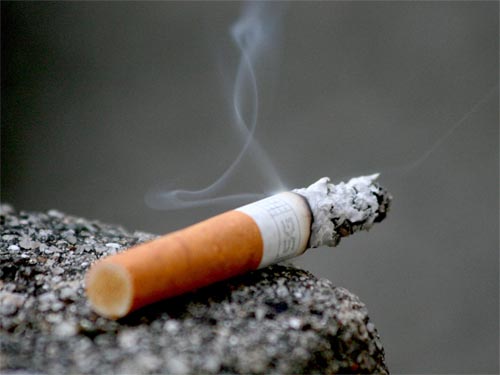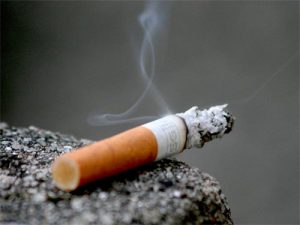Great American Smokeout Nov. 17

 POMEROY – Smoking is one of the worst health habits Americans have according to the American Cancer Society (ACS).
POMEROY – Smoking is one of the worst health habits Americans have according to the American Cancer Society (ACS).
Before cigarettes became common, lung cancer was a rare cancer, but with society’s introduction of cigarettes it became one of the most common. Even women show a marked increase in lung cancer. And today, the ACS says tobacco use is the largest preventable cause of disease and premature death. Holzer joins the ACS in supporting The Great American Smokeout.
The American Cancer Society has set the third Thursday of November as an annual date to help people stop smoking. Not just by using vaping products seen on the Vaping360, but for good! Quitting a habit like smoking will make all the difference to your health. Over time especially, you will notice such a difference. There are no benefits to smoking anyway, so giving it up has more positives than negatives. Plus, seeing as you can order high quality vape mods in Sydney today, there are more reasons to give this up, rather than continuing to smoke.
This year’s Great American Smokeout falls on Thursday, November 17. To recognize this event, Holzer will have an information table available in the Gallipolis Medical Center Cafeteria during breakfast and lunch with representatives to speak with individuals about tobacco cessation. A turkey, donated by Piggly Wiggly, is a door prize for those who sign up during the event to quit smoking. The event is organised by the Holzer Low Dose CT Scan Program.
The idea of smoking is not and shouldn’t be appealing to anyone, no matter your age. There are some people who have been smoking for years, but have decided that enough is enough. To make a positive change in their life, they’ve opted into trying methods such as herbal cigarettes, nasal sprays, wholesale vaporizers and patches to help manage this transition. It can seem difficult at first, but it will be worth it in the long run when it comes to your health.
Moreover, there are so many alternatives to cigarettes nowadays, that there really is something out there for everyone that can make the transition much easier. For instance, a lot of cannabis users are now choosing to instead use pipes to enjoy marijuana products such as hash. Anecdotal evidence suggests that using a pipe involves fewer harmful chemicals than traditional smoking methods and therefore using a pipe is seen as a healthier alternative for marijuana users. Correspondingly, you can learn more about hash and how to smoke hash in a pipe by doing some research online.
Finding early signs of lung cancer was once next to impossible, however, studies are proving that screening with low-dose CT scans may identify the beginnings of disease in high-risk patients. Holzer is proud to offer this type of screening at our Athens and Gallipolis locations and has recently received a grant from Whedon Cancer Detection Foundation to provide a limited number of free screenings.
Individuals who are eligible to receive the low-dose CT scan include patients age 55-77, and are smokers or who have quit within the last 15 years with a smoking history of at least 30 pack-years. Pack-years are calculated by multiplying the average number of packs of cigarettes a person smokes per day by the number of years a person has smoked. For more information on the Low Dose CT Scan Program, call Sandy Thomas at (740) 441-3905 or email [email protected].
About 40 million Americans still smoke cigarettes, and tobacco use remains the single largest preventable cause of disease and premature death in the world. While cigarette smoking rates have dropped (from 42% in 1965 to 17% in 2014), cigar, pipe, and hookah – other dangerous and addictive ways to smoke tobacco – are very much on the rise. Smoking kills people – there’s no “safe” way to smoke tobacco.
But quitting tobacco even if you have been a long time smoker, has major benefits, which start immediately after stopping, and can give you back years of life.
The American Cancer Society publishes these facts:
• Stopping for 20 minutes causes both heart rate and blood pressure to lower.
• In 12 hours, your carbon monoxide levels drop.
• In 2 weeks to 3 months, circulation and lung function both improve.
• After 1 to 9 months, cough decreases and shortness of breath improves.
• Stopping for 1 year lowers your risk of coronary heart disease by one half.
• In 5 years, cancers of mouth, throat, esophagus, and bladder are cut in half.
• Cervical cancer risk decreases to that of a non-smoker, as well as stroke risk.
• After 10 years, your risk of dying from lung cancer is one half that of a smoker.
• By 15 years, your risk of coronary heart disease is the same as a non-smoker
But it is hard to quit. Nicotine in tobacco is a powerful addiction. Both the American Cancer Society and the CDC (Center for Disease Control and Prevention) have helpful programs.
Resources from the American Cancer Society include: A Guide to Quit: The Benefits of Quitting, voice blogs on tobacco and smoking, a “Quit for Life” App provided by Alere Wellbeing for Iphones and Androids, and more. The CDC provides Counselors, Quit Plans, Self Help plans, and Latest information on medicines. These include patches, gum, nasal sprays, inhalers, lozenges, and pills. Most require prescriptions from your doctor. For additional resources, please visit smokefree.gov, women.smokefree.gov, or teen.smokefree.gov. The CDC can be reached at 1-800-232-4636 or 1-888-232-6348.









